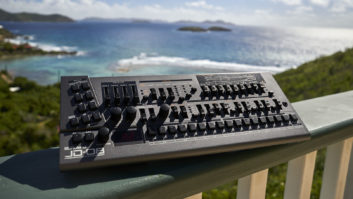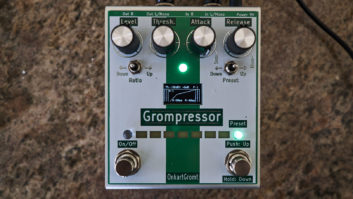
When Kenny Beats traveled to England in February 2021 to work with the reigning kings of punk rock, IDLES, at Peter Gabriel’s Real World Studios in Bath for their latest album, he had one of the most productive 10 days of quarantine on record.
Two key things happened during this quarantine period for the producer, who is known for his work with Vince Staples, Denzel Curry, Rico Nasty and many others. First, IDLES sent Beats a playlist of reference music that was 27 hours long and included favorite artists, songs they are inspired by or love the sound of, and songs they don’t like but love the sound of. Beats didn’t listen to anything else for the duration of the quarantine, and he credits the playlist for setting him, and the band, up for success.
Second, prior to tracking, Beats spent a lot of time at Real World exploring the facilities and their capabilities with two extremely well-versed engineers—Oli Middleton, an alum of Real World, and Chris Fullard, IDLES front of house engineer—discussing a plan of action.
“Because of what the band gave me as examples, I had a pretty clear game plan for diversity, variety and versatility,” Beats says. “I knew we weren’t going to be able to set up the way they had for all their other albums, with everyone in the room playing together. We had to nail many different pockets and sub-genres in different stylings for a band that, up to this point, people have been trying to put in a box. We had to make sure we weren’t in that box from a recording standpoint so that they could get even more creative from a songwriting standpoint.”
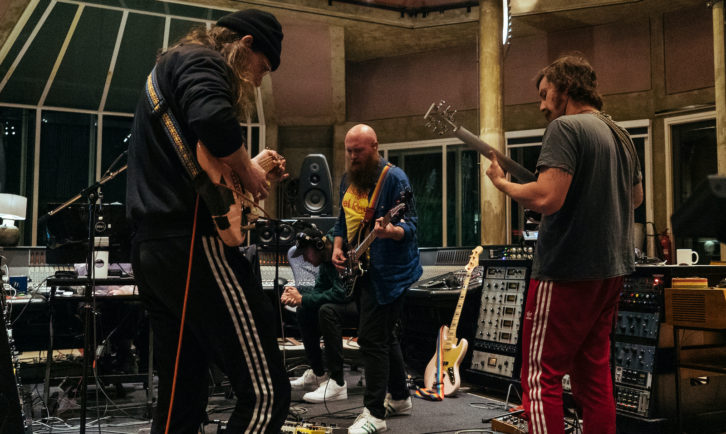
Beats’ relationship with IDLES started with him sliding into their DMs on Instagram. This led to producing their cover of Gang of Four’s “Damaged Goods,” with some additional production on their previous album, Ultra Mono. The band later revealed to Beats that this was their vetting process that led to the collaboration on CRAWLER.
IDLES guitarist and co-producer Mark Bowen says, “[Beats] was able to keep everything in control and headed where we intended, rather than getting lost in impractical production ideas. He constantly asked us questions, which caused us to ask questions of ourselves about where we wanted the album to go and how we wanted to present it.
“We wanted to push the boundaries of what the expectations of the band are from our listeners’ point of view,” he continues, “but also from our point of view. Can we write an electronic song, a slow acoustic number, something without any drums, a caustic hip hop song, and still maintain that sense of IDLES?”

Bowen references Portishead’s album Third as the key touchstone for CRAWLER, with production at the forefront. As Bowen points out, Portishead has released three albums in a 30-year career while IDLES has released four albums in four years. By writing, recording and releasing music at a breakneck speed, the group hasn’t necessarily had the time to evolve much, which makes CRAWLER’s sonic evolution that much more impressive.
STEPPING INTO REAL WORLD
CRAWLER turned out to be Beats’ first experience working completely outside the box. He credits Middleton and Fullard for their willingness to demonstrate the ease of using Real World’s extensive selection of outboard gear, and he noted the superior quality of the resulting recording.
“I’ve never had a more capable experience,” states Beats. “Every single thing I would reach out for from Soundtoys or Waves or Universal Audio, the real thing is right there at Real World. When you have the equipment and the engineering team who can set up 20 mics in 10 minutes with all vintage gear running through unbelievable preamps into an unbelievable desk, the idea of using a fake distortion reverb is stupid. They have a plate and a spring in a chamber. It really educated me as a producer. I learned so much during the recording process.”
“Real World has a lot of options when it comes to physical outboard and gear that people are so used to using plug-in versions of,” concurs Middleton. “It’s a real luxury being able to reach for these tools to get the sounds that the band were after without making compromises.”
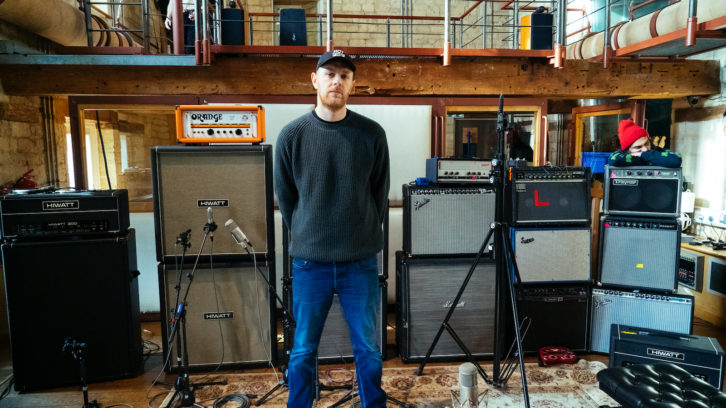
Tracking took place in The Big Room at Real World, with most mics plugged into original Neve 1073s and other vintage preamps, then into the famed 72-channel SSL 9000K console. Also coming into play were an array of compressors and effects, including Distressors, vintage Pultecs, LA-2As, 1176s, AMS RMX16, Lexicon 480L, Space Echo, EMT140 and BX25.
For Beats, every single sound on CRAWLER, from the extremes of “Car Crash” to the tambourine and piano on “The Beachland Ballroom,” was about getting the best version of it, no matter how many takes or how many different instruments it took to find it. Previously, it was songwriting, creativity and ideas that separated the songs, not the sonics, Beats says. On CRAWLER, the songs sound completely different from each other.
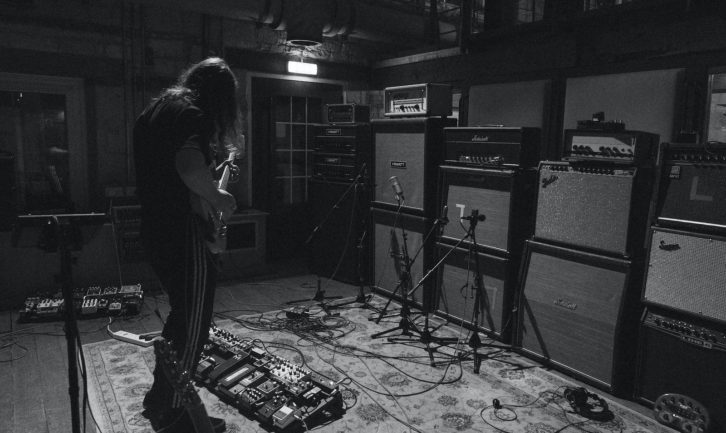
To record such disparate tracks but make them fit together sonically, Beats and IDLES compartmentalized the songs. They had a group of songs that had a vintage Motown, old soul, band feel because of singular characteristics. They had a “heavy” group of intense, gnarly songs like “The Wheel” and “Car Crash.” They had a group of songs that are ethereal and beat-free and don’t sound like a rock band at all, like “MTT 420 RR,” and another group of proto-IDLES songs, including “King Snake” and “Meds.”
“We decided that for three days, we’re going to record the songs in the heavy group,” Beats explains. “We’re going to set up the drums with the most amount of microphones, extremely HD. We’re going to use new guitars. If we’re doing the Motown group, we’re going to use a drum kit from the ’50s and use six microphones. We’re only going to use guitars pre-1970. We’re only going to use pedals and amps that existed pre-1970s. We’re going to use recording techniques that they would have back then. That was my whole game plan for this album, to give the band that variety.”


